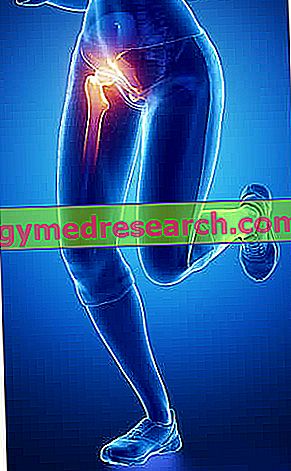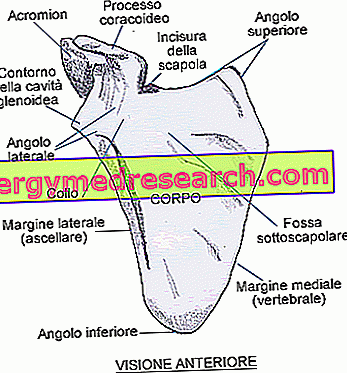By Dr. Luca Franzon
The term pubalgia means a pain syndrome characterized by pain in the inguinal and / or pubic areas and / or on the inner face of the thighs.

INSERTIONAL TENDINOPATHY = pubalgia is caused by repeated microtraumas on the adductor muscles of the thigh and abdominal muscles. The critical point of these muscular insertions is the pubic symphysis which represents the area in which the ascending and descending forces of the involved muscles are discharged.
SIFISIARIA SYNDROME = caused by microtraumas induced by the adductor muscles which, acting in elongation and in an unbalanced way between the two limbs, create a sort of yielding at the level of the symphysis. This situation leads to an imbalance in the stability and balance of the pelvis. This is a situation that is created above all in the age of development during which the symphysis is already weaker in itself.
SLEEVELESS SYNDROME OF THE ABDOMINAL RECTAL OR OF THE PERFORATING NERVOUS RUBBER OF THE KICKER = The pubalgia is caused by the kicking gesture during which there is a strong tension in the abdominal muscles. This tension sometimes creates a fixation of the superficial fascia with consequent stretching and compression on the perforating nerve which then gives life to the pain syndrome.
Symptoms
To learn more: Symptoms Pubalgia
Initially the pain is located in the pubic area, then it radiates in the antero-medial aspect of the thigh and sometimes also in the retropubic area associated with bladder tenesmus (feeling of incomplete bladder emptying so much as to have to go almost continuously to urinate even if the bladder is completely empty )
It can present with an initial symptomatology with pain especially when waking up and starting physical activity. Both these symptoms disappear with the movement demonstrating the presence of a slight inflammation. In the most serious cases the pain is continuous and heavy and sharpens in sudden movements. At the clinical examination the adductory musculature turns out to be contracted and the pressure at the level of the pubis is more or less painful.
Causes
Among the causes triggering pubalgia, a particular reference, because not always investigated, is the relationship between teeth, malocclusion and posture. The presence of any pre-contacts creates muscular tensions that are transmitted to the articular muscle system in the neck and cervical tract through the temporomandibular joint with subsequent repercussions on the whole postural system.
As fitness instructors, it is right to know that even pregnant women can sometimes suffer from pubalgia because of the laxity of the pubic symphysis due to the marked release of the relaxin hormone, which makes the joints slower.
In conclusion, it can be said that groin is a well-known pathological entity, it requires an early diagnosis that will allow for adequate and effective treatment. Beyond all those that can be medical or kinesiological therapies in this type of pathology of vast etiology, it is necessary to be able to understand what is the cause or the triggering causes and try to eliminate them.
As in all pathologies it would be useful to try to prevent them instead of treating them. The different prevention programs, applied with rigor, must allow in the coming years to avoid this surmenage pathology.
Treatment
In acute the subject must absolutely remain at rest and undergo medical therapy followed by physiotherapy.
In the chronic situation, in addition to medical therapies, functional recovery is also used through physical activity aimed at:
- Elongation of adductory musculature both traditional and in PNF
- Rear Chain Lengthening through Mezieres Team or Souchard Global Active Stretching
- Mono and bipodalic proprioceptive exercises, on various surfaces, in various decubituses, with open and closed eyes, going up with a jump, etc.
- Strengthening of the retroversional muscles of the pelvis, paying particular attention to the abdominals
- Trophism and muscular strength through isometry and elastic bands
- Intermuscular coordination and reprogramming of the motor scheme through oscillations and impulses of the lower limbs, different types of stroke (rectilinear, curve, in acceleration and deceleration, with changes of direction, with various types of stops), through different gaits (skip, race kicked, side step). If necessary, also insert specific gestures relevant to any sport practiced.
To learn more: Remedies Against Pubalgia »
BIBLIOGRAPHY
- Benazzo F, Cuzzocrea F, Mosconi M, Zanon G. The football player's pubalgia.
- Benazzo F, Mosconi M, Zanon G, Bertani B. Groin pain. J. Sports Traumatol 1999; 21 (1): 30-40.
- Bruckner P, Bradshaw C, McCrory P. Oblurator neuropathy. A cause of exercise related groin pain. Physician and Sports Med 1999; 27: 62-73.
- Busquet L. THE VOLUME III MUSCULAR CHAINS - The Pubgraphy Editions Marrapese 1998
- Cibulka MT. Rehabilitation of the pelvis, hip and tight. Clin. Sports and Med 1989; 8: 777-803
- Danowski RG, Chanussont JC: Traumatology of sport - Ediz. Masson, Milan, 2000
- Estwanik JJ, Sloane B, Rosemberg MA. Groin strain and other possible causes of groin pain. Physician and Sports Med.1988; 18: 59-65.
- Fournier JY, Richon CA. Revue critique de 25 patients pour pubalgie par miorraphie inguinale (Operation de Nesovie). Helv Chir Aeta 1993; 59: 775-778.
- Fredberg U, Kissmeyer-Nielsen P. The sportsman's hernia. Fact or fiction? Scnd. J. Sports Med 1996; 6 (4): 201-204.
- Hackney RG. The sports hernia: a cause of groin pain. Br. J. Sports Med 1993; 27: 58-62.
- Holmich P, Uhrskou P, Ulnits L, Kanstrup IL, Nielsen MB, Bjerg AM, Krogsgaard K. Effectiveness of active physical training as a treatment for long-standing adductor-related groin pain in athletes: randomized trial. Lancet. 1999 Feb 6; 353 (9151): 439-43.
- Jarvinen M, Orava S, Kuyala UM. Groin pain (Adductor Syndrome), Operative techniques. In: Sport Medicine 1997; 5 (3): 133-137.
- Karlsson J, Sward L, Kalebo P, Thomee R. Crhonic groin injuries in athletes. Recommendations for treatment and rehabilitation. Sports Med 1994; 11: 141-148.
- Lovell G. The diagnosis of chronic groin pain in athletes: a review of 189 cases. Aust. J. Sci. Med. Sport 1995; 27: 76-79.
- Niccolai R. The diassetto of the pelvis and its complications. Technical Sector Newsletter. 2004 N ° 6; 17-27.
- Orchard JW, Read JW, Neophyton J, Garlick D. Groin pain Associated with ultrasound finding of inguinal canal posterior wall deficiency in Australian Rules footballers. Br. J. Sports Med 1998; 32: 134-139.
- Renstrom P, Peterson L. Groin Injuries in athletes. Br. J. Sports Med. 1980; 14: 30-36.
- Renstrom P. Tendon and muscle injuries in the groin area. Clinics in Sports Med 1992; 11: 815-831.
- Simonet WT, Saylor HL, Sim L. Abdominal wall muscle tears in hockey players. Int. J. Sports Med 1995; 16 (2): 126-128.



